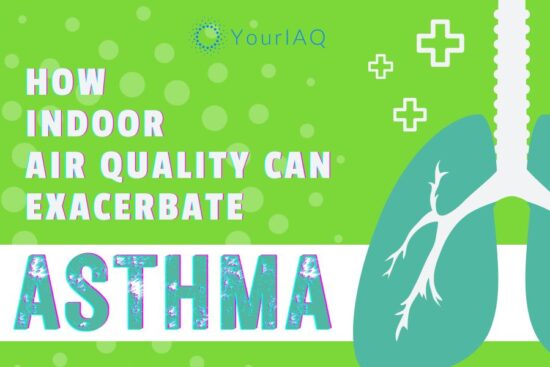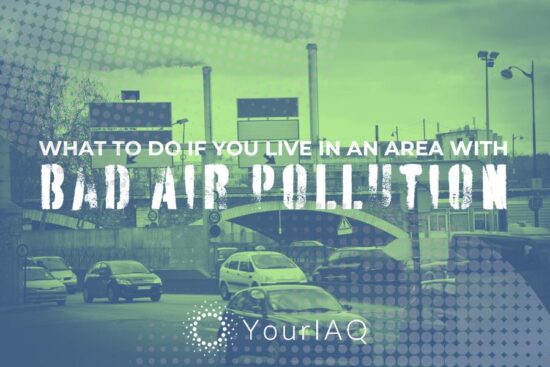
Having pets brings joy and companionship into our lives, but it’s no secret that our furry friends also contribute to indoor air quality issues, affecting not just humans but the air quality for pets, too. From dander and fur to the little bits of the great outdoors they bring inside, pets pose challenges to maintaining a clean, healthy home environment.
But don’t worry! With a bit of knowledge and some proactive steps, you can share your home with pets while keeping the air fresh, clean, and conducive to good health for both you and your pets.
Let’s dive in!
Understanding Pet Dander and Allergies
We adore our pets, but the truth is they can be a bit messy. If you’ve got allergies or are just concerned about the air you breathe, it’s important to understand how your furry companions impact the air in your home.
Dander
Pet dander, particularly from dogs, is a notable trigger for allergies in many individuals. This dander comprises tiny, even microscopic, flakes of skin shed by dogs, along with proteins found in their saliva and urine.
When these proteins make their way into the air and subsequently come into contact with human airways, eyes, nose, mouth, or skin, they can prompt a variety of allergy symptoms.
Because dog dander is so fine, it can remain airborne for extended periods, allowing it to settle on surfaces throughout the home, such as furniture, bedding, and clothing. It can also travel on personal items, spreading its presence beyond the immediate environment of the pet.
How Pet Allergies Affect You
If you have a pet allergy, exposure to dander can cause uncomfortable symptoms like:
- Sneezing
- Runny or stuffy nose
- Itchy, watery eyes
- Difficulty breathing
Other Pet-Based Pollutants
- Dust and Dirt: Our furry explorers bring in a LOT from outside. That means pollen, dust, and whatever else they stepped in.
- Saliva: Drool and slobber happen! Dried saliva on toys or floors adds another layer of stuff to your air.
See also: Understanding the EPA’s Criteria Air Pollutants
7 Tips for a Healthy Home and Optimal Air Quality for Pets
The good news is that you don’t have to choose between a clean home and your best friend! Here’s how to strike a balance:
1. Regular Grooming
Keeping your pets well-groomed reduces the amount of dander and hair in your home, improving the air quality for pets and people alike. Regular baths and brush-outs help keep fur from spreading around the house.
Consider using pet-friendly grooming products to minimize skin irritation and dander production.
2. Clean Living Spaces Frequently
Vacuuming at least twice a week with a HEPA filter-equipped vacuum cleaner effectively captures pet hair, dander, and other allergens. Also, remember to clean your pet’s bedding, play areas, and favorite spots regularly.
3. Maintain Air Filters
Your HVAC system’s air filters trap pet dander and other allergens, preventing them from circulating through your home. Replace these filters regularly, according to the manufacturer’s recommendations, to maintain optimal air quality.
4. Air Purifiers
An air purifier with a True HEPA filter is effective in rooms where your pets spend a lot of time. These devices help remove pet dander, hair, and other particulates from the air, making it cleaner and healthier for both humans and pets to breathe. The Centers for Disease Control and Prevention (CDC) supports the use of portable HEPA filtration units, stating that they are “a preferred option for auxiliary air cleaning… especially in higher risk settings.”
When choosing an air purifier, consider these factors:
- HEPA certification: Choose a purifier with a True HEPA filter, which captures at least 99.97% of particles as small as 0.3 microns.
- Pre-filters: Select a model with a pre-filter to capture larger pet hair and extend the life of the HEPA filter.
- Activated carbon filters: If you’re concerned about pet odors, look for a purifier with an activated carbon filter.
- Room size: Consider the square footage of the room where you’ll be using the purifier. Choose a model with a CADR (Clean Air Delivery Rate) appropriate for the space.
- Noise level: Some air purifiers can be noisy. If this is a concern, opt for a quieter model.
5. Designate Pet-Free Zones
If possible, keep certain areas of your home pet-free, especially bedrooms or other spaces where people with allergies or asthma spend a lot of time. This helps limit exposure to allergens.
6. Optimize Ventilation
Ensuring good ventilation helps dilute and remove airborne contaminants, including pet dander. Open windows when weather permits, and use exhaust fans to help circulate fresh air throughout your home.
7. Allergen-Reducing Pet Products
Today, there are various pet products available designed to reduce or neutralize allergens. From pet shampoos that minimize dander to allergen-reducing pet wipes, these products are a valuable addition to your routine.
It’s Worth the Effort
Our pets give us so much love and companionship, and a little extra cleaning is a small price to pay. By understanding the air quality challenges and implementing a few simple strategies, you can keep your home happy, healthy, and fur-filled!
Frequently Asked Questions: Pets & IAQ
Got more questions about keeping the air clean with a furry friend in the house? We’ve got answers!
How often should I bathe my dog to reduce dander?
That depends entirely on their breed and skin type. Overbathing can actually make things worse! Consult your veterinarian for the best bathing schedule.
My floors are still covered in fur! Any extra tips?
A lint roller can be your best friend for furniture and clothes. Also, try a damp microfiber mop after sweeping – it picks up what your broom leaves behind.
Can air purifiers really help with pet dander?
Yes, air purifiers equipped with HEPA filters are highly effective at capturing pet dander, hair, and other allergens.
Help! I’m allergic to pets, but I love them. What can I do?
Talk to your doctor or an allergist. They may recommend allergy medications or treatments that help reduce your reactions over time.
Can certain types of pets have a lesser impact on air quality?
Yes! Some dogs (Poodles, Bichon Frise) and cats (Sphynx) are naturally low-shedding, reducing dander.







